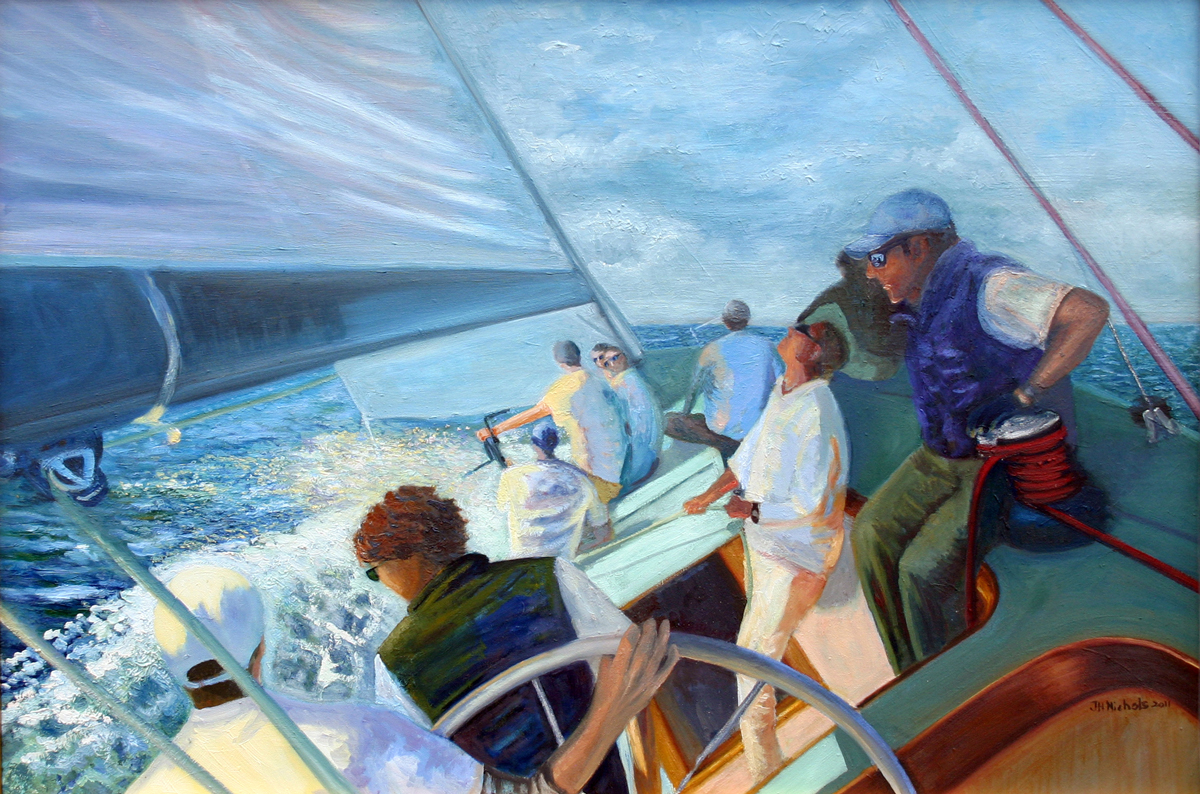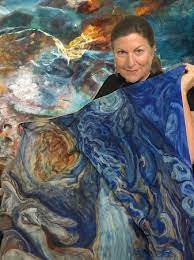
Level: all
March 5 - March 19, 2024
Tuesdays
6-8pm
3 weeks
Instructor: Jill Harrington Nichols
Instructor's website
Fee: $100
THIS CLASS HAS BEEN CANCELLED.
Delve into color in this three night workshop.
In this class, Jill will reveal color’s mysteries in a playful and explorative approach. Students are encouraged to work at their own pace in the medium of their choice, including oil, acrylic, casein, gouache, or watercolor.
Jill will begin the session with a presentation and color exercises that will inform students about color interactions, palettes, value, temperature, saturation, intensity, definitions, and placement in composition, color theory, science, and cultural and psychological meaning. Students will take away an enhanced working knowledge of color, handy reference materials, and nuances of color mixing that will be applied in the following classes.
The second and third classes will start with a quick demo and/or lecture and exercises focused on color and value. Expect to work from a grayscale photograph with a good value range and contrast.
This class is appropriate for artists of all levels as well as students who have taken this class before. It’s a wonderful primer for the beginner as well as a good exercise for more advanced artists who would like to refine their use of color.
Note: this class will be taught online using Zoom. Please download and become familiar with the app prior to the start of class. A zoom invite and a photo from which to work will be emailed each week.
Suggested Supply list: Note that most of the supplies below can be conveniently purchased from Jthe lists that I’ve set up at Dick Blick online at: https://tinyurl.com/2p8c9t6x
For Our First Class: Bring an 11” x 14” wet media (watercolor) pad, with yellow, red, and blue paints, with other essentials listed below.
Paints Recommended Brands:
- Oils: Budget: Daler-Rowney, Georgian, Lukas/ Good: Gamblin, Utrecht, Grumbacher/ Intense pigments: Old Holland, Williamsburg
- Acrylics: Golden or Liquitex
- Watercolor: Winsor Newton and Turner
Basic Colors- All Mediums
- Yellows: Cadmium Yellow Pale (light or lemon yellow) and Cadmium Yellow Deep, (Cadmium Medium, Hansa, New Gamboge)
- Reds: Alizarin Crimson, Cadmium Red Light, (Magenta, Quinacridone Red Cadmium Red, Naphthol)
- Blues: Ultramarine Blue, Cerulean Blue, (Cobalt, Manganese, Phthalo- note Phthalo colors can be difficult to control)
- Earth Tones: Yellow Ochre, Burnt Sienna, (or Transparent Red Oxide), Burnt Umber
- White: (does not apply to watercolor) Large tube of Titanium, Opaque, and/or Titanium/Zinc mix (more transparent)
Optional/Alternative Colors:
- Ivory Black, Paynes Grey
- Secondaries: Green – Sap and Viridian / Orange – Cadmium and Transparent / Dioxazine Purple
- Oil Paints: Gamblin: Cadmium Chartreuse/ Old Holland: Brilliant Pink and Scheveningen Blue Light/ Williamsburg: Severs/Kings Blue https://www.dickblick.com/myaccount/blicku/jx8jt4grcew4h/
Essentials:
- Rags, Viva, or Blue Shop paper towels
- Gloves and/or barrier cream to protect hands.
- Palette- larger the better: Oil or Acrylic-Masterson with a disposable pad/ Watercolor – a deep plate, white enamel tray, plastic
- Oil: Container for solvent-metal with a closable lid works or clean jars, Palette Scraper, Gamsol mineral spirits or Chelsea Classica
- All water-based mediums – Two containers for water
Oil/Acrylic/Casein/Gouache Essentials:
- Quality Brushes: Round – #2 #4, Filbert – #8, #10, #12, Flat or angled– #2, #6, #10, #12, 1” and 2” flat, Small bright
- PRIMED Canvas or panels
- 2 Palette Knives
Watercolor/Gouache Essentials:
- Paints: The old-fashioned solid watercolor tray with colors. Winsor Newton and Turner are good choices for tubes.
- Brushes: Think of it as a good investment, as decent brushes will provide enjoyment for many years to come.
- Sables are the best and most expensive option, Oxhair or soft nylon or a blend of natural and synthetic hairs will also work.
- Brushes to start: #12 round, 7 round, 00,0 or 1 round, 1”, 8 filberts, ½” flat, Japanese calligraphic brush
- Paper: Paper is a large part of the outcome of a watercolor painting. There is a cold or hot press (smoothest).
- If you use a lot of water washes, you will want to use thick cold press paper (300 lb.) rough.
- If you use very little water and like to draw then a hot press, smooth paper works best.
- To begin a pad of inexpensive paper, such as a Canson Watercolor Pad will be fine.
Optional Materials:
- Waxed paper for transport, a Roll of Masking Tape, and Small scissors.
- 9 x 12″ (or similar size) sketchbook, Black Sharpie, Pencils HB, 2B, Sharpener, Erasers, Gum kneaded eraser
- Toned paper, and black and white charcoal pencils for value
- Nutcracker- or pliers to open stubborn tubes.
- Oil: Gamblin non-toxic safflower gel medium
- Acrylic: Retarder to slow down the drying, Gel medium
- Watercolor: Mr. Clean Magic Eraser, natural sponge
About the Instructor:
 Jill Harrington Nichols grew up in coastal Connecticut. Her paintings explore both the earthbound and outer expanses of our divine cosmos. Her keen sense of color has developed over her many years as a commercial artist and painter. She earned her undergraduate degree at the University of Colorado, Boulder, trained in oil painting at the Art Students League in NYC and earned her MFA in painting at Western Connecticut State University.
Jill Harrington Nichols grew up in coastal Connecticut. Her paintings explore both the earthbound and outer expanses of our divine cosmos. Her keen sense of color has developed over her many years as a commercial artist and painter. She earned her undergraduate degree at the University of Colorado, Boulder, trained in oil painting at the Art Students League in NYC and earned her MFA in painting at Western Connecticut State University.
Her commissioned painting of Washington D.C. appeared as a backdrop for James Comey’s interview on “Face the Nation” while another appeared on Showtime’s “The Comey Rule” mini-series. Her artworks Phi, and Juno, which embrace the divine feminine are installed in the Vatican Observatory Museum.
Jill has received awards from the U.S. Department of the Interior, National Park Service, and Connecticut Office of the Arts. An active participant in the art communities throughout Connecticut, Jill has served as vice president for the Connecticut Plein Air Painters Society and Valley Arts Council and exhibited at the Rowayton Art Center*, Silvermine Gallery, Lyme Art Association, Carriage Barn, Greenwich Art Society, and Lyman Allen Museum.
Accustomed to teaching students at all levels, Jill has a way of instilling confidence and encouraging students to take risks with exceptional outcomes. She teaches painting at the Silvermine Arts Center, the Rowayton Arts Center and leads painting workshops locally, abroad, and online. She also has a few videos on YouTube.
